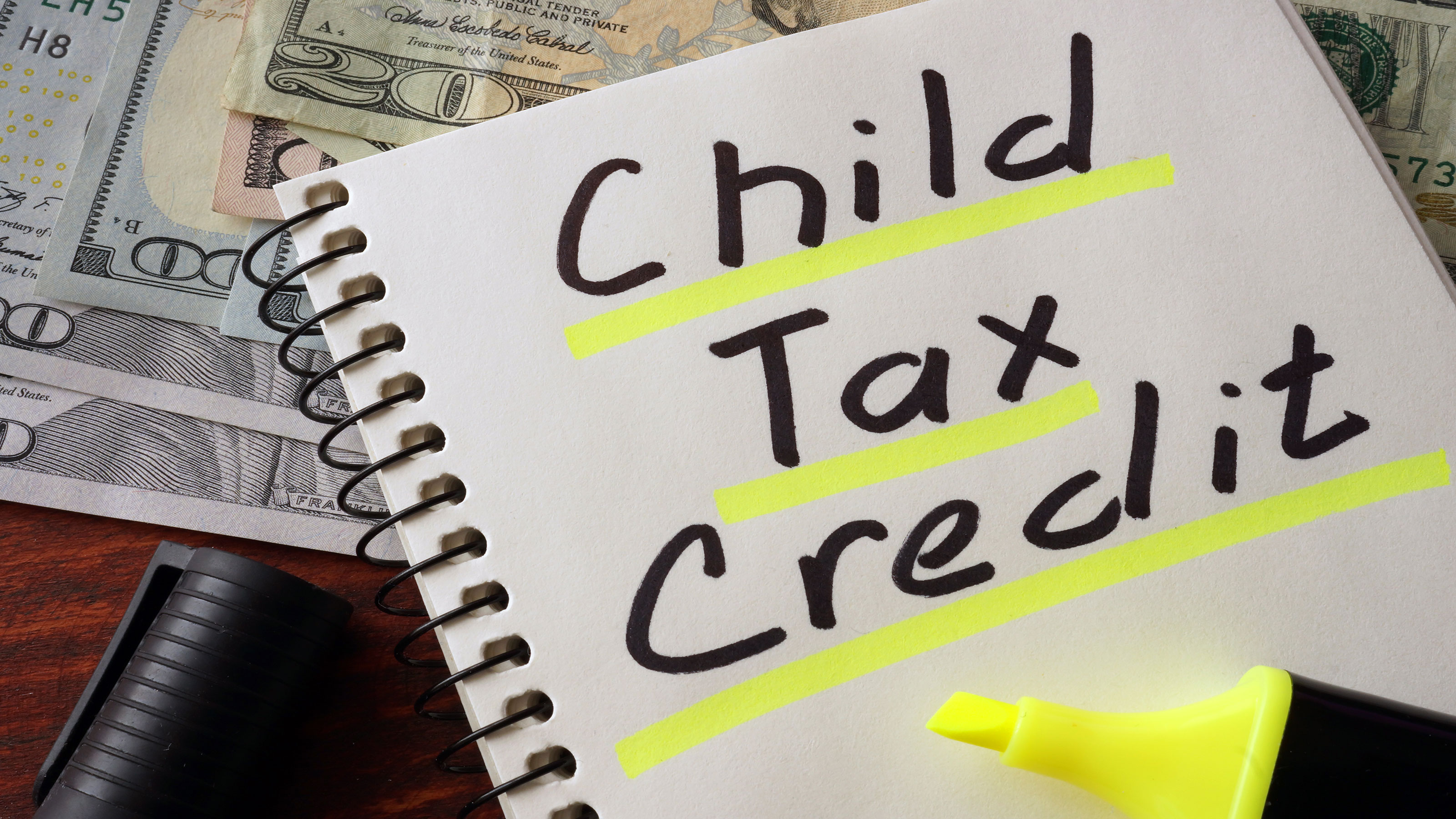Child Tax Credit Update: IRS Sending Letters to Families Who May Get Monthly Payments
The IRS has identified over 36 million families that may qualify for monthly child tax credit payments of up to $300 per child. The payments will begin on July 15.


The American Rescue Plan offers American families a bigger and better child tax credit for 2021. For this year only, the credit amount for many families is increased from $2,000 per child to $3,000 per kid ($3,600 for children under age six), 17-year-olds qualify, and the credit is fully refundable.
One additional major element of the new child tax credit regime requires the IRS to make advance payments of the credit to qualifying families in the second half of this year. The IRS will base eligibility for the credit and advance payments, and calculate the amount of the advance payment, based on previously filed tax returns. It will first look to your 2020 return, and if a 2020 return has not yet been filed, the IRS will look to your 2019 return.
The advance payments will account for half of a family's 2021 child tax credit. The amount a family receives each month will vary based on the number of children in the family, the ages of the kids and the amount of the family's adjusted gross income. Families who qualify for the full $3,000 or $3,600 credit will see checks of $250 or $300 per child for six months. Families with higher incomes who qualify for the $2,000 credit will get monthly payments of $167 per child for six months. (Calculate your monthly payment using Kiplinger's 2021 Child Tax Credit Calculator.)

Sign up for Kiplinger’s Free E-Newsletters
Profit and prosper with the best of expert advice on investing, taxes, retirement, personal finance and more - straight to your e-mail.
Profit and prosper with the best of expert advice - straight to your e-mail.
The IRS says that it will issue these monthly child credit payments to eligible families on July 15, August 13, September 15, October 15, November 15, and December 15. Most payments will be directly deposited into bank accounts. Families for which the IRS does not have bank account information could receive paper checks or debit cards in the mail. Most eligible families do not have to do anything to get these payments, provided the IRS has your 2019 or 2020 return information and you don't need to change anything to reflect current circumstances.
The IRS has started sending letters to more than 36 million families that the tax agency believes may be eligible for the advance child credit payments based on 2020 or 2019 return data. Those letters are generally for informational purposes. The IRS plans to send a second round of letters to eligible families later this summer, and that latter correspondence will list the family's estimated monthly payment.
Families who didn't file tax returns for 2019 or 2020 because their income is below the threshold required to file a return may have to jump through some hoops to get their child tax credit advance payments. The IRS will accept simple returns for 2020 on Form 1040 filed electronically or on paper. But you don't have to fill out the entire return. Instead, you will only need to include your filing status and identifying information, provide information about your children and dependents, and follow the rest of the IRS's instructions. Alternatively, if you had no adjusted gross income for 2020, you may electronically file a regular Form 1040. For a complete rundown of the IRS instructions for simple returns and zero AGI returns, see Child Tax Credit 2021: How to Get Monthly Payments if You Don't File Tax Returns. Note that you won't have to follow these procedures if you used the IRS's online tool for non-filers in 2020 to provide information to the tax agency for purposes of qualifying for stimulus payments. That tool was called the "Non-Filers: Enter Payment Info Here" portal.
The American Rescue Plan also requires the IRS to develop an online portal so that you can update your income, marital status, number of qualifying children and direct deposit information. So, if your circumstances change in 2021 from your last filed federal tax return, and you believe those changes could affect the amount of your child credit for 2021, you will be able to go onto that portal once it is up and running and update it for the correct information. You will also be able to check on the status of your advance payments on the tool. Additionally, people who want to opt out of the advance payments and instead take the full child credit on their 2021 return can do so through the online portal. The IRS is also launching another online tool to help families determine whether they qualify for the advance payments. Although the IRS fully expects to launch these tools by July 1, they are sure to need enhancements and adjustments as taxpayers begin to enter data into the tools. In other words, don't be surprised to see snags, at least in the beginning.
Challenges still lie ahead for the tax agency in implementing the new child tax credit program. The IRS is having to build a system to compute and recompute payments as people provide new information into the portals. The system must also be able to issue and track payments, as well as reconcile the payments with the taxpayer's credit taken on the tax returns. Additionally, one major issue that the IRS will need to deal with is how to minimize the potential for fraud when it comes to refundable child tax credits. For example, the IRS estimates that in 2020 it improperly paid $4.5 billion in such refundable credits. IRS Commissioner Charles Rettig appears to agree that there is an element of risk for increased fraud in the new child tax credit program.
For more information on this year's child tax credit, see Child Tax Credit 2021: Who Gets $3,600? Will I Get Monthly Payments? And Other FAQs.
Get Kiplinger Today newsletter — free
Profit and prosper with the best of Kiplinger's advice on investing, taxes, retirement, personal finance and much more. Delivered daily. Enter your email in the box and click Sign Me Up.

Joy is an experienced CPA and tax attorney with an L.L.M. in Taxation from New York University School of Law. After many years working for big law and accounting firms, Joy saw the light and now puts her education, legal experience and in-depth knowledge of federal tax law to use writing for Kiplinger. She writes and edits The Kiplinger Tax Letter and contributes federal tax and retirement stories to kiplinger.com and Kiplinger’s Retirement Report. Her articles have been picked up by the Washington Post and other media outlets. Joy has also appeared as a tax expert in newspapers, on television and on radio discussing federal tax developments.
-
 Customer Services are Strained at the SSA, You Should Plan Around These Federal Holidays
Customer Services are Strained at the SSA, You Should Plan Around These Federal HolidaysIf you have a question or need information from a federal agency, check the federal holiday schedule to make sure you get your business done before they close.
By Donna LeValley
-
 Stock Market Today: No 'Powell Put'? No Problem
Stock Market Today: No 'Powell Put'? No ProblemInvestors, traders and speculators look beyond both another Trump post and more signs of slowing economic activity.
By David Dittman
-
 Which Generation Pays the Most Tax in the US?
Which Generation Pays the Most Tax in the US?Tax Burden Polls show that most people feel like taxes are unfair. But which age group bears the brunt of the tax burden in the United States?
By Kelley R. Taylor
-
 Here’s How the Trump Harvard IRS Tax Threat Could Impact You
Here’s How the Trump Harvard IRS Tax Threat Could Impact YouTax Law Trump's latest higher education showdown raises fundamental questions that could reach beyond nonprofit tax status.
By Kelley R. Taylor
-
 Tax Day 2025: Don’t Miss These Freebies, Food Deals and Discounts
Tax Day 2025: Don’t Miss These Freebies, Food Deals and DiscountsTax Day You can score some sweet deals on April 15 in some select restaurants like Burger King, Shake Shack, and more.
By Gabriella Cruz-Martínez
-
 Tax Time: Does Your Kid Influencer Owe Taxes?
Tax Time: Does Your Kid Influencer Owe Taxes?State Tax Some minors are making big money on social media. Here’s how to know if they need to file taxes.
By Gabriella Cruz-Martínez
-
 Trump Plans to Terminate IRS Direct File program
Trump Plans to Terminate IRS Direct File programTax Filing Direct File was piloted last year in 12 states and has since expanded to 25. But some wonder whether the program will last under the Trump administration.
By Gabriella Cruz-Martínez
-
 Did Florida’s Chance at $1,000 in Property Tax Rebates Vanish?
Did Florida’s Chance at $1,000 in Property Tax Rebates Vanish?State Taxes The Florida Legislature bypassed Gov. Ron DeSantis’ wish to cut property taxes and instead voted to lower the state’s sales tax.
By Gabriella Cruz-Martínez
-
 How Caregivers for Adults Can Save on Taxes in 2025
How Caregivers for Adults Can Save on Taxes in 2025Tax Breaks Caring for your parent or spouse can be stressful, but the IRS offers tax breaks for qualifying taxpayers. Here they are.
By Kate Schubel
-
 New South Carolina Income Tax Cut Might Eat Your Cash
New South Carolina Income Tax Cut Might Eat Your CashState Taxes South Carolina’s flat income tax bill could have the majority of residents paying higher income taxes. Find out how.
By Kate Schubel